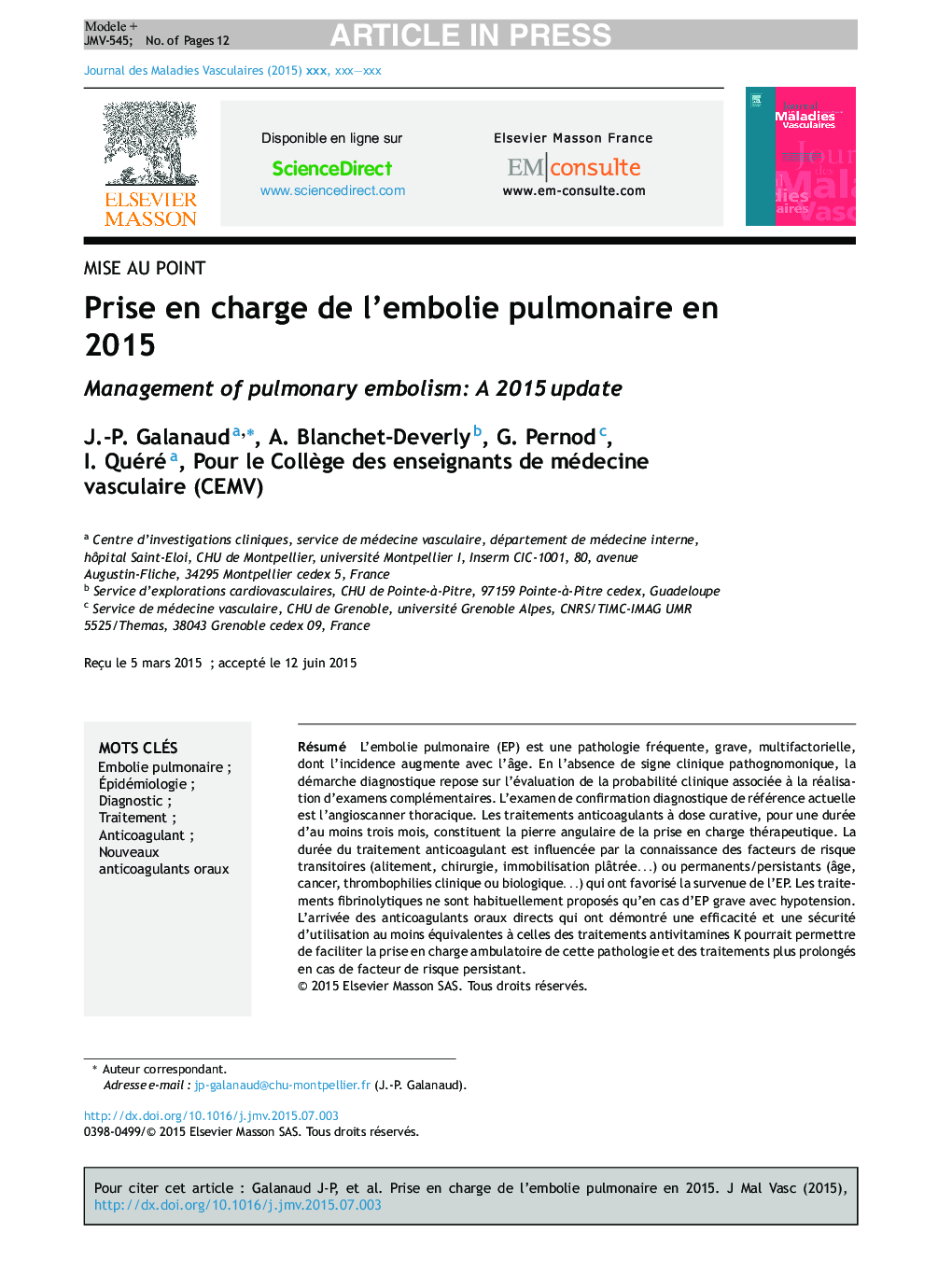| Article ID | Journal | Published Year | Pages | File Type |
|---|---|---|---|---|
| 2974197 | Journal des Maladies Vasculaires | 2016 | 12 Pages |
Abstract
Pulmonary embolism (PE) is a frequent, serious and multifactorial disease, the incidence of which increases with advanced age. In the absence of pathognomonic clinical signs or symptoms, diagnostic management lies in the evaluation of clinical pre-test probability followed by a laboratory or an imaging test. So far, multidetector computed tomography angiography is the diagnostic test of choice to make a positive diagnosis of PE. Anticoagulants at therapeutic dose for at least 3 months constitute the cornerstones of PE therapeutic management. Duration of anticoagulant treatment is modulated according to the presence of transient (surgery, plaster immobilization, bed rest/hospitalization) and chronic/persistent (age, cancer, clinical or biological thrombophiliaâ¦) risk factors of PE. Thrombolysis is usually prescribed only for cases of severe PE with arterial hypotension. Arrival of new oral anticoagulants, which have recently been shown to be as effective and as safe as vitamin K antagonist, should simplify and ease ambulatory management of PE and favor more prolonged treatments with anticoagulant for cases of unprovoked PE or PE provoked by a chronic/persistent risk factor.
Keywords
Related Topics
Health Sciences
Medicine and Dentistry
Cardiology and Cardiovascular Medicine
Authors
J.-P. Galanaud, A. Blanchet-Deverly, G. Pernod, I. Quéré, Pour le Collège des enseignants de médecine vasculaire (CEMV) Pour le Collège des enseignants de médecine vasculaire (CEMV),
